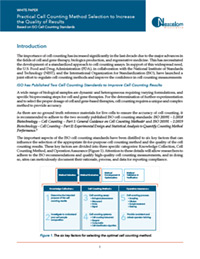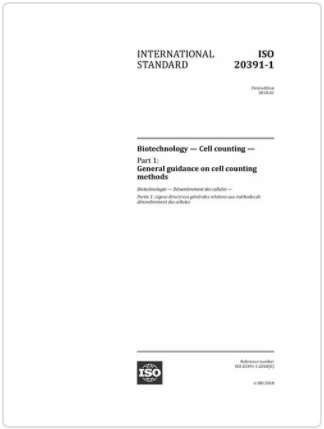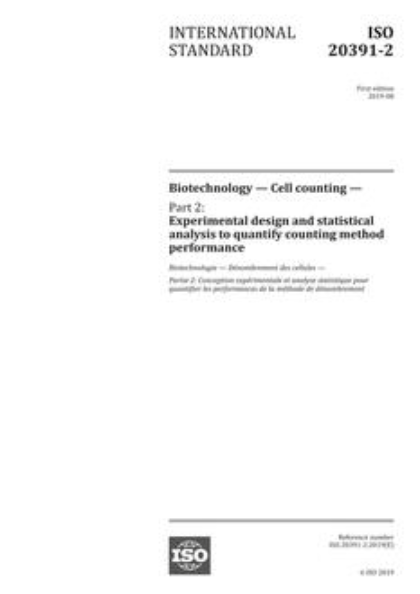Practical Cell Counting Method Selection to Increase the Quality of Cell Counting Results
Based on ISO Cell Counting Standards Part I
Cell counting has become a critical factor for various biology fields
The importance of cell counting has increased significantly in the last decade due to the major advances in the fields of cell and gene therapy, biologics production, and regenerative medicine. This has necessitated the development of a standardized approach to cell counting assays. The United States Congress has also recognized the importance of cell counting and viability standardization in the 21st Century Cures Act for streamlining development and quality assurance, as well as facilitating regulatory approval of cell and gene therapy products. Therefore, the U.S. Food and Drug Administration (FDA), in collaboration with the National Institute of Standards and Technology (NIST) and the International Organization for Standardization (ISO), has launched an effort to standardize cell counting methods to improve the confidence in cell counting measurements.
Practical Cell Counting Method Selection
ISO has published two cell counting standards as guidance to improve cell counting results
A wide range of biological sample types, dynamic and heterogeneous samples, and various formulations and bioprocessing steps mean that cell counting needs for cell and gene therapies are highly unique and complex. Furthermore, the fact that there are no ground truth reference materials for live cells increases the difficulty for determining the accuracy of cell counting defined in the ICH Harmonised Tripartite Guideline – Validation of Analytical Procedures: Text and Methodology Q2 (R1). Therefore, in order to increase the confidence of cell counting results, it is critical to follow the two recently published ISO cell counting standards, and ISO 20391 – 2:2019 Biotechnology – Cell Counting – Part I: General Guidance on Cell Counting Methods and ISO 20391 – 2:2019 Biotechnology – Cell Counting – Part II: Experimental Design and Statistical Analysis to Quantify Counting Method Performance, to ensure cell counting methods are tailored to the specific sample and purpose.
Figure 1. The six key factors for selecting the optimal cell counting method.
It is important to note that after the initial selection and evaluation of a cell counting method, method development, optimization, validation, and continuous verification following the Validation of Analytical Procedures are also critical for downstream processes for cell-based product manufacturing. In order to tailor cell counting methods to specific experimental needs, the focus of the current discussion is to provide insights and guidance for the ISO standards for method selection and evaluation (Figure 1). To that end, the important aspects of the ISO cell counting standards have been distilled to six key factors that can influence the quality of the cell counting results, which should be considered to select the appropriate cell counting methods that are fit-for-purpose. These key factors are divided into three specific categories: Knowledge Collection, Cell Counting Method, and Operation Assurance (Figure 1). Attention to these details will allow researchers to more easily adhere to the ISO recommendations to ensure high quality cell counting measurements, and in doing so, sites can meticulously document their rationale, process, and data for reporting FDA compliance.
The 6 key factors that can affect the selection of cell counting methods and the quality of cell counting measurements
- Determine the intended use of the cell counting result (fit-for-purpose), such as tumor digestion for single cell-based transcriptome analysis, mouse tissue processing for cytotoxicity assays, or isolation of human PBMCs for immunophenotyping analysis, etc.
- Investigate to understand cell sample composition, where it is important to know the cell composition (various cell types, particle debris, chemical impurities, and suspension medium), as well as their visual appearances.
- Understand the assay principles and select the appropriate cell counting assay, such as total, live, dead cell count, viability, or cell population analysis.
- Investigate the capabilities and select the appropriate cell counting systems, where the system consists of reagents, consumables, instrument, and software algorithms.
- Treat cell counting as a whole process, including sampling, diluting, and staining, which are critical for proper sample preparation.
- Provide continuous operator training, in order to ensure consistent cell counting results.



